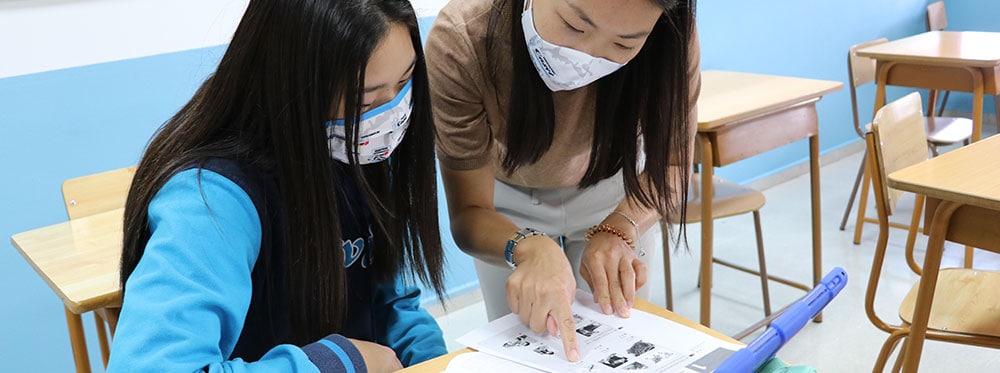International schools such Casvi offer an ideal environment to develop and foster the greater global awareness that is so necessary in today’s society.
Casvi students, who are training to be the world leaders of the future, need to develop an international mindset. An exceptional knowledge of people and cultures around the world, and an unprecedented concern for the well-being of the global community. And an unprecedented concern for the well-being of the global community. What educational tools do we use at Eurocolegio Casvi International Private School to achieve this international mindset? How does our International Baccalaureate methodology help us? What about multilingualism or language exchanges?
Towards an International Mindset
International mindset that we promote at Eurocolegio Casvi International Private School. We do this through the following tools:
International curriculum
The process of promoting international mindedness requires a consciously designed curriculum. A curriculum that guides teachers and students towards the correct use of the resources and different cultures available to them. In the case of Casvi, this is provided by the International Baccalaureate Methodology, with its three programmes (PYP, MYP and Diploma Programme).
Studying under this methodology “allows us to take a big step forward in this reality. A model for the future that reinforces the development of the global competencies that society is demanding. This is worked on at Casvi from the age of 3 thanks to the IB Programmes Continuum“, says Juan Luis Yagüe, the school’s director. “A very dynamic, up-to-date and innovative method that is recognised worldwide for access to the best universities thanks to a quality International Baccalaureate”.
Facilitating linguistic fluency: multilingualism
Language learning is a very effective tool for overcoming cultural barriers and international mindset. In this sense, at Casvi, multilingualism is based on the teaching of three foreign languages as a compulsory subject: English from the first year of life, and German and Chinese from 5th Grade. It is offered in small groups and with native and bilingual teachers.
“Thanks to this learning methodology our Baccalaureate students can pass the highest levels, Advanced and/or Proficiency, and even study the Bilingual Diploma Programme (IB),” adds Juan Luis Yagüe.
Language Exchanges
The cultural diversity of our school community is to be explored, embraced and celebrated whenever the opportunity arises. One such example is our Language Exchange Programme. These are organised without any intermediary agency, through direct contact with schools around the world.
In the USA they last two months and our students from 5th grade Primary School take part in them. Those in Germany last two weeks, and it is our Secondary and Baccalaureate students who enjoy this opportunity. Experiences like these promote global awareness and an international mindset. This also allows for a commitment to diversity.
Commitment to service learning
Our service-learning programme, structured around our IB Methodology, helps us to develop our students’ empathy with the human condition. It also leads them away from an attitude of economic superiority and elitism. And it leads them to a critical and analytical consciousness.
International teachers
The educational quality of an international school like Casvi is also marked by its international teaching staff. This does not mean that it is made up exclusively of foreigners, but rather that they are trained in this international mindset. This will enable them to do the same for their pupils.
International students
The international mindset at Casvi is also marked by the fact that our classrooms welcome more and more students of different nationalities. Students who are looking for a linguistic and cultural experience that will help them to develop as a whole. Their interaction with others has become a pillar of our teaching model.
